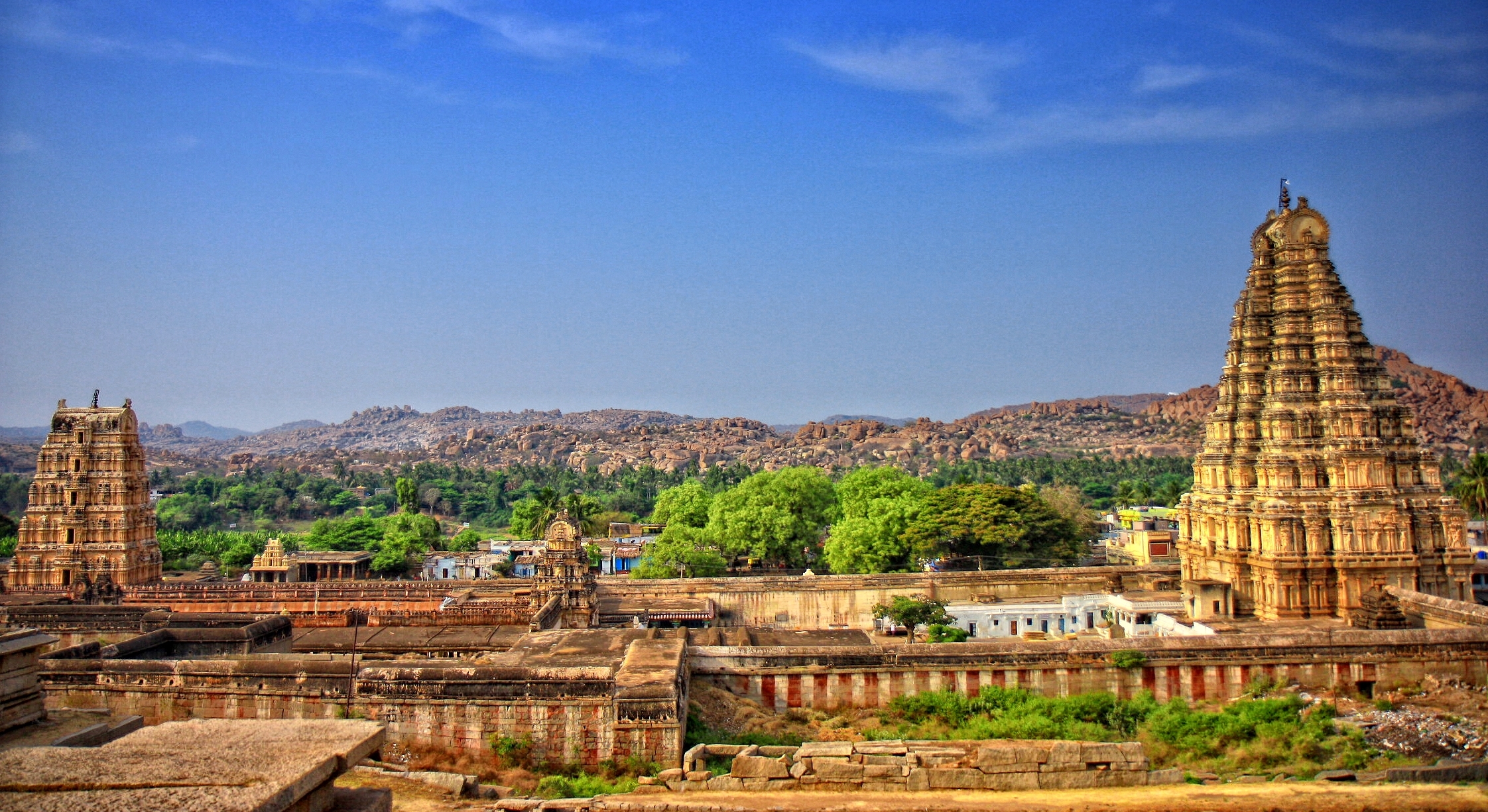
GOLDEN
GOLDEN TEMPLE
“Ik Onkar” is the sacred symbol representing the supreme reality: God is One. Sikhism, as a religion, arose from Guru Nanak Dev Ji’s profound vision of this One Ultimate Reality. In the turbulent and oppressive times of the 15th century, when religious inequality overshadowed the minds and lives of the people, Guru Nanak Dev Ji, with his divine ideology and teachings, succeeded in bridging the gap between the two predominant religions of India, Hinduism and Islam, enlightening the world with the message of unity and equality. From his efforts, Sikhism emerged as a beacon of hope and spiritual freedom.
To ensure the continuity of this faith after his passing, Guru Nanak Dev Ji appointed Guru Angad Dev Ji as his successor. The lineage continued with Guru Amardas Ji, who, in 1569, chose his devoted follower Bhai Jetha to accompany him to a site about 25 miles from Goindwal. Guru Ji envisioned building a new city there, a place where the Supreme Master would reside, and he named it Amritsar.
He also planned the construction of a holy tank, Santokhsar (the tank of contentment), in an area surrounded by Sheesham trees. Bhai Jetha acquired the land for Rs 700 Akbari, and in 1570, Guru Amardas Ji laid the foundation of the city. The first structure to be built was GURU KA MAHAL, or the house of the Guru. On August 30, 1574, Guru Amardas Ji chose Bhai Jetha as his successor, blessing him with the name Guru Ram Das. Guru Ram Das Ji continued the construction work, and devotees, moved by their love for the Guru, came from far and wide to participate. By 1577, the excavation and masonry of Amritsar and Santokhsar were completed.
It is rightly mentioned in Shri Guru Granth Sahib Ji:
“RAM DAS SAROVAR NAHTE
SAB UTRE PAP KAMATE”
Meaning: “Whoever bathes in the Sarovar of Guru Ram Das is freed from the burden of sins.”
Even today, millions of devotees’ bathe in this pool of nectar, seeking freedom from the sins they have committed.
In 1581, Guru Arjan Dev Ji initiated the construction of the Gurdwara, later known as Harmandir Sahib. The foundation stone was laid by Mian Mir, a Muslim saint and close friend of Guru Ji. It took eight years to complete the first version of the Gurdwara. While some sources claim that Mian Mir laid the foundation, Sikh traditional accounts suggest that Guru Arjan Dev Ji himself performed the ceremony. On August 16, 1604, Guru Arjan Dev Ji completed the expansion and compilation of the first version of the Sikh scripture, the Adi Granth, and placed a copy in the Gurdwara. Baba Buddha was appointed as the first Granthi.
In 1802, Maharaja Ranjit Singh announced plans to renovate the Gurdwara, rebuilding it in gold and marble. The temple was renovated with marble and copper in 1809, and in 1830, Ranjit Singh donated gold to overlay the sanctum with gold leaf.
“Dithe Sabe Thanv Nhi Tudh Jeheya”
Meaning: “I have seen all places, but none can compare to You.”
This metaphysical verse from the sacred Shri Guru Granth Sahib Ji describes the unparalleled spirituality, blessedness, and saintliness of Harmandir Sahib.
Gurudwara Shri Harmandir Sahib, also known as Darbar Sahib (exalted court) and famously known worldwide as the Golden Temple, is located in the city of Amritsar, Punjab, India. It is a preeminent spiritual and transcendental site of Sikhism, an eternal beacon of faith for Sikhs around the world. The story of the Darbar Sahib is the story of Sikhism itself—glittering in glory, radiant in beauty, with non-stop reverberations of Guru’s Kirtan, soft-hearted service to humanity, and an inexplicable pull for anyone seeking serenity on earth.
As one steps onto the blessed entrance of Harmandir Sahib and catches sight of the Gurdwara, it feels as if one is laying in the feet of God. The head automatically bows in devotion and respect, and the words “Dhan Dhan Guru Ram Das” naturally escape one’s lips. As one does the parikarma (circumambulation) of the Gurdwara complex, they encounter the following structures:
- Akal Takht and Teja Singh Samudri Hall: The Akal Takht is the chief Takht, a centre of authority in Sikhism. It means “Throne of the Timeless (God).” The Teja Singh Samundri Hall serves as the office of the SGPC. The twin Nishan Sahibs (flags) fluttering before the Akal Takht are linked by a shield and crossed swords, symbolizing Meeri-and-Peeri (temporal and spiritual authority).
- Ramgarhia Bunga and Clock Tower: The Ramgarhia Bunga stands as a symbol of the Ramgarhia Sikh community’s identity, their historic sacrifices, and their contribution to defending the Golden Temple over the centuries. The Clock Tower, however, was not part of the original temple. It replaced a building now referred to as the “lost palace.”
- Ber Sahib (trees): The Golden Temple is surrounded by several sacred trees. One of them is the Laachi Ber, believed to be the tree under which Guru Arjan rested while the temple was being built. Another significant tree is the Dukh Bhanjani Ber, associated with the curing of a Sikh’s leprosy after bathing in the pool, hence the name “suffering remover.”
- Guru Ram Das Langar Hall: Food is served here to all visitors, regardless of faith, gender, or economic background. The food is vegetarian, and everyone eats together as equals.
Several rites are performed daily in the Golden Temple, adhering to historic Sikh traditions. These rites treat the scripture as a living Guru, out of deep respect. They include:
- Sukhasan: At night, after a series of devotional kirtans and ardaas (prayers), the Guru Granth Sahib is closed, carried on the head, and placed in a flower-decorated, pillow-bed palki (palanquin). The palki sahib is then carried to the Guru’s bedroom in the Akal Takht, where it is placed on a bed for the night.
- Prakash: At dawn each day, the Guru Granth Sahib is ceremoniously taken from its bedroom, carried on the head, and placed in a flower-decorated palki, accompanied by chanting and the sounding of a bugle across the causeway. It is then brought to the sanctum. After the divine kirtan of Asa Di Var and Ardas, a random page is opened. This is the mukhwak (saying) of the day, which is read aloud and written for pilgrims to reflect upon throughout the day.
As Karminder Sahib Dhillon has eloquently stated, “The Darbar Sahib is the center of the universe of Sikhism; distinctive in its existence, unique in its function, matchless in its form, inimitable as a representation of Sikhism, and above all, one of a kind, even in name.”
Whenever I visit this divine place, my soul feels immaculately pure. All negative thoughts automatically vacate my mind and heart, and the spiritual word “Waheguru” echoes within me. It is believed that Guru Ram Das Ji himself resides in Harmandir Sahib, and this belief only strengthens with each visit. It is also believed that in this sacred place, if faith is held high, the sicks are cured of their illnesses, and all the affairs of the people are resolved.
To summarize, in the praises of Harmandir Sahib, the least I could say is:
“Ram Das Guru Ne Amritsar Sheher Basaya,
Guru Arjan Ne Hari Ka Mandir, Harmandir Usarya,
Logo Ne Kaha Ki Ram Das Sarovar Ke Beecho Beech Guru Ka Mahal Saja Hai,
Hari Ka Ghar Sab Ke Liye Humesha Khula Hai,
Anand Chaya Jag Mai,
Jab Ranjit Singh Ne Harmandir Ko Swarn Mandir Kehlvaya,
Hai Yeh Darbar Sahib,
Darbar Sach Ka,
Darbar Nyaya Ka,
Darbar Dharam Ka,
Darbar Insaaf Ka,
Darbar Pyaar Aur Apnepan Ka,
Hai Yeh Darbar Mere Guru Ram Das Ka.”
By: Prabhgun Kaur
Write and Win: Participate in Creative writing Contest & International Essay Contest and win fabulous prizes.


